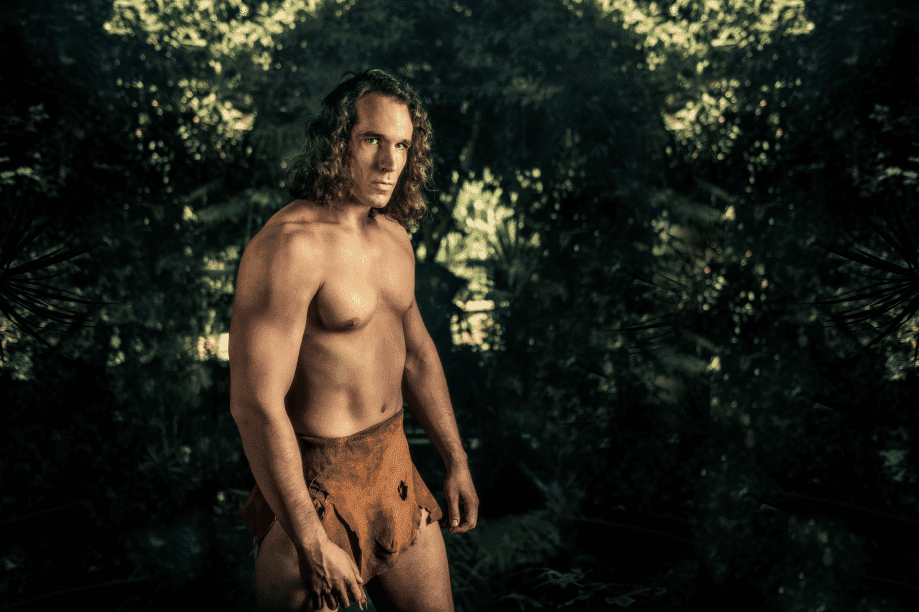OREM — Stories about children growing up and leaving home to become adults will always have a place in family-centered Utah County. Maybe that is why Tarzan, which features two grown children each facing the prospect of creating a new life apart from their parents, is such a hit in Utah County and why Hale Center Theater Orem made it their featured summer show this year.

Based on the Edgar Rice Burroughs novels and the 1999 Disney film, the stage musical Tarzan tells the story of a man who was raised by African gorillas after his parents were shipwrecked and later killed in the jungle. Isolated from other humans for years, Tarzan suddenly meets an Englishwoman, Jane, and realizes that there are other people like him. Before long, their mutual curiosity results in a romantic spark between them, but each must choose whether to live in a foreign place with their new love or return to their old lives.
Beyond the basic plot synopsis, David Henry Hwang‘s script is about finding love, dealing with loss, growing up, and the surprise that comes when people discover that they have something in common, despite their differences. Director David Morgan never loss sight of the emotional core of the play, and the show’s heart was apparent in “Sure as the Sun Turns to Moon” and “Everything That I Am.” I also appreciated Morgan’s decision to create a human ensemble that served as a musical chorus and sometimes observed the action on stage. If anything, I wish that Morgan had used these silent observers more on stage because of the way they served as a bridge between the audience and the actors on stage.

David Matthew Smith played Tarzan as a noble savage, whose natural compassion and curiosity made him an interesting center of attention, whether he was interacting with his ape family or exploring the new human world. Smith also ensured that Tarzan’s echolalia when he was learning language was not annoying, but rather the product of his naive inquisitiveness. That fascination with the world around him was a trait that Tarzan shared with Jane, played by Malia Mackay. She was a spot of refinement in the middle of the jungle. Mackay’s first entrance, singing the song “Waiting For This Moment” was full of bright-eyed optimism about the world.
Marcie Jacobsen was tender in the role of Kala, Tarzan’s adopted ape mother. Her heart-filled performance of “You’ll Be in My Heart” made me accept her love for her new adopted baby. This genuine emotion made it easy for Jacobsen to create tension between Kala and her mate, Kerchak (played by Patrick Kintz) over baby Tarzan. On the other hand, Wade Robert Johnson‘s performance as Terk was less interesting because I had difficulty believing that there was a lifelong friendship between him and Tarzan. Johnson also, unfortunately, struggled to sing some of the highest notes in his songs.

One highlight of the production was Jennifer Hill-Barlow‘s choreography. An eclectic mix of hip hop, modern, and jazz dance, Hill-Barlow kept the musical numbers like “Son of Man” and “Two Worlds” fresh and unpredictable. Her triumph, though, was “Trashin’ the Camp,” which featured nine gorillas danced frenetically in formation on stage.
Key to this production of Tarzan were the gorilla costumes designed by MaryAnn Hill and Nat Reed. These costumes added bulk in the chest and thighs of the actors to give them a more apelike physique. These outfits were stylistic; complex patterns on the pants, leggings, and the shredded fabric that substituted for fur added some pizzazz to the show. The jungle set (designed by Bobby Swenson and Cole McClure) was painted a mottled mix of greens, and the strips of cloth that hung down from almost every inch of the ceiling effectively hid the lights and added to the jungle illusion. In light of these strong visual aspects, the projections that technical directors Cody Swenson and Cody Hale used for the panther scenes seemed like a misstep.
Although Tarzan is not the best Disney stage musical, it has its charms. More importantly, it has an emotional core that is missing from some other Disney stage shows, like The Little Mermaid and Aladdin. As strange as it seems, this play—which has only six human characters—says more about the human condition than most people realize. Children can relate to the relationship between Tarzan and his ape friend Terk, while parents can appreciate the love that Kala shows for Tarzan or that Porter shows for Jane. But it isn’t necessary to look for any deep meaning to enjoy this production of Tarzan. Audience members who just want to enjoy the Phil Collins score and see some fine performances will find everything they’re looking for at the Hale Center Theater this summer.
[box]Tarzan plays at Hale Center Theater (225 West 400 North, Orem) nightly (except Sundays and July 4) at 7:30 PM, with matinees at 4 PM on Fridays (beginning July 28), 3 PM on Saturdays, and 11 AM matinees on Saturdays (except July 1). Tickets are $14-24. For more information, visit www.haletheater.org.[/box]
